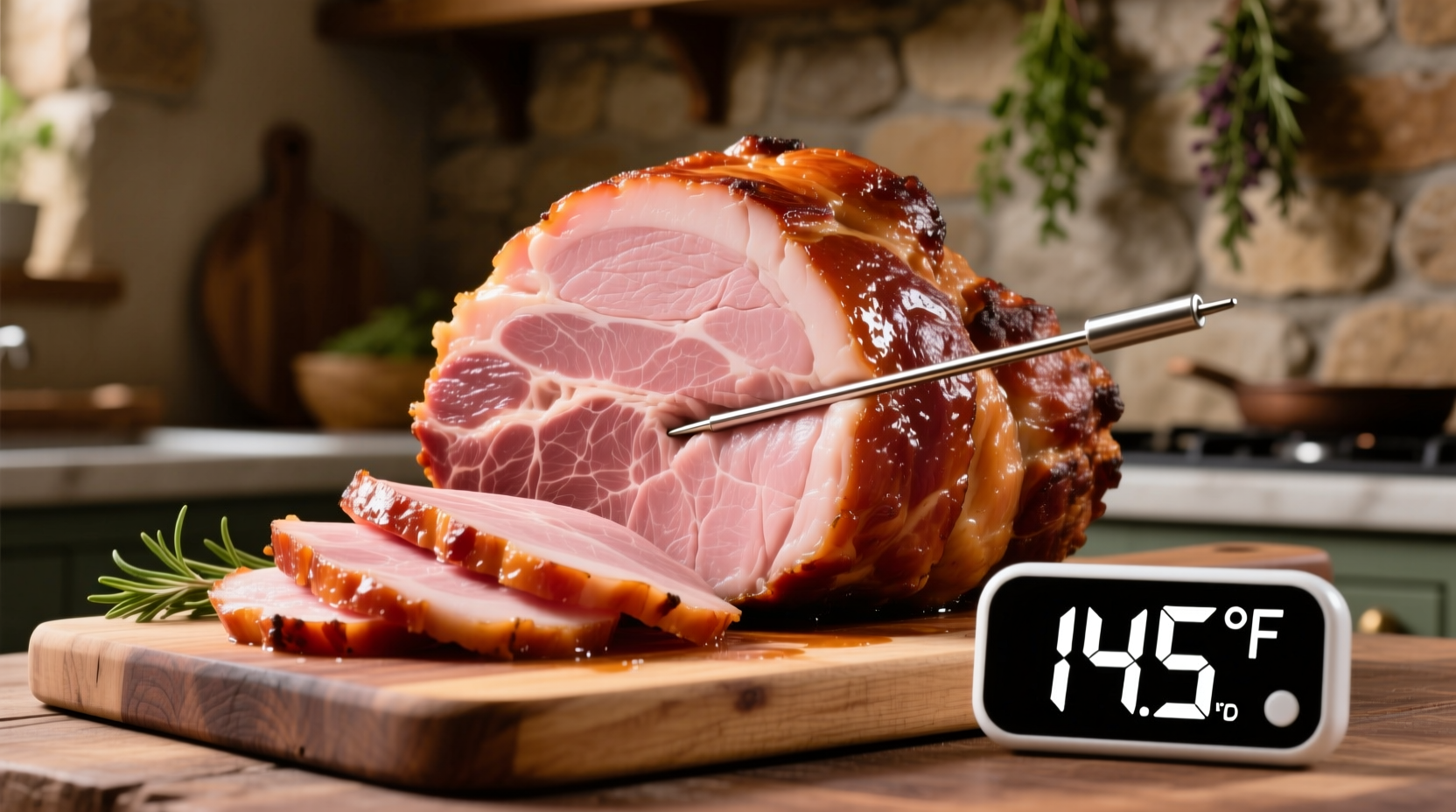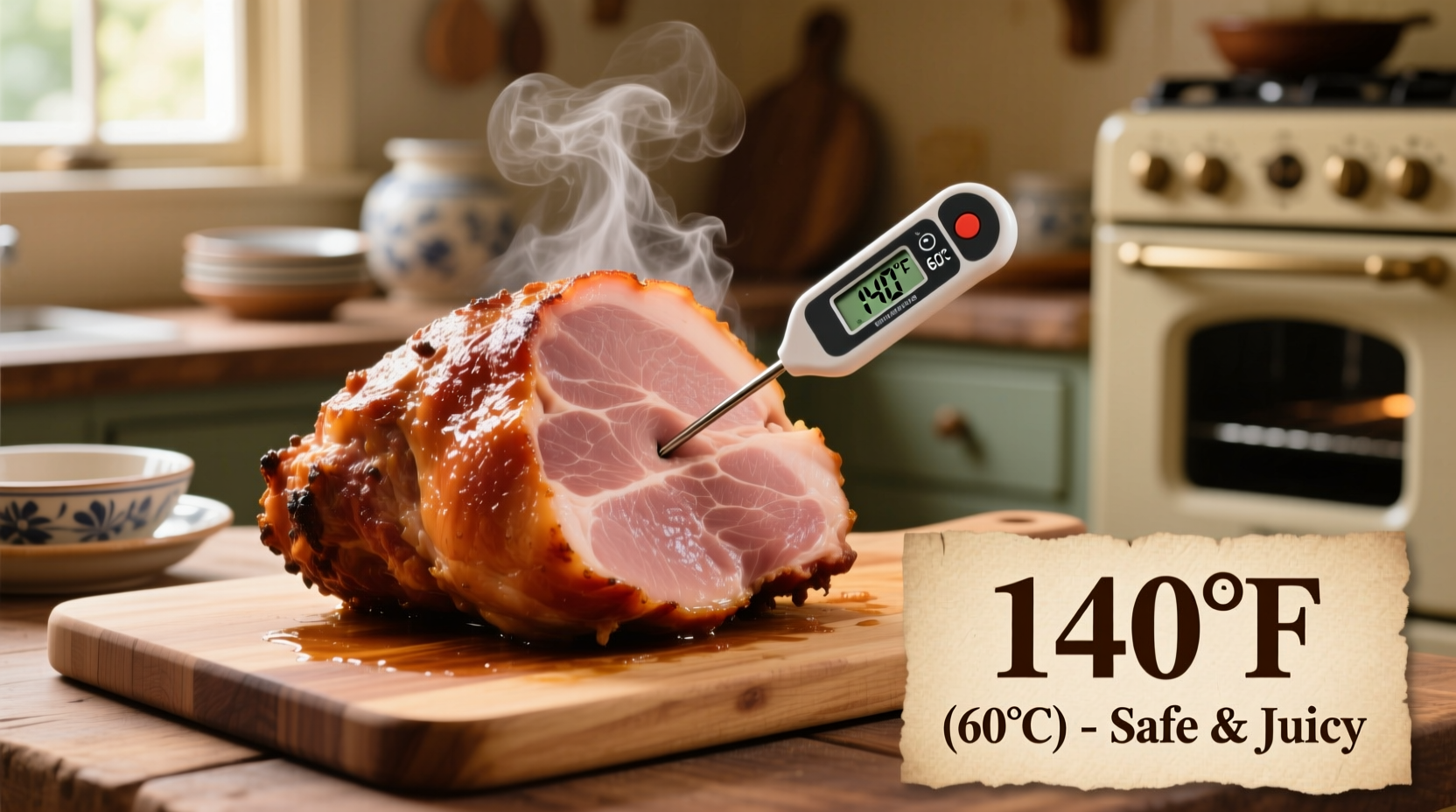Nothing ruins a holiday meal faster than an overcooked, dry ham or worse—an undercooked one that makes guests sick. Getting the temperature right isn't just about perfect flavor and texture; it's critical for food safety. This guide delivers precise, science-backed temperature guidelines for every ham scenario, so you can serve a moist, flavorful centerpiece that's safe to eat. We've distilled USDA recommendations, food science principles, and professional chef techniques into one actionable reference.
Understanding Ham Types and Temperature Basics
Not all hams are created equal, and cooking temperatures vary significantly based on processing. The key distinction is whether your ham is pre-cooked (most common for holiday meals) or raw/fresh (requires full cooking).
Pre-cooked hams (labeled "fully cooked," "ready to eat," or "heat-and-serve") have already been cured, smoked, or baked. Your goal is reheating to a safe temperature without drying it out. These include city hams, spiral-cut hams, and most supermarket varieties.
Raw or fresh hams require full cooking from raw state. These are less common for home cooks and typically labeled "cook before eating." They include some country hams and fresh pork leg cuts.
| Ham Type | Recommended Oven Temp | Target Internal Temp | Rest Time |
|---|---|---|---|
| Pre-cooked (including spiral-cut) | 325°F (163°C) | 140°F (60°C) | 3 minutes |
| Raw/Fresh ham | 325°F (163°C) | 145°F (63°C) | 3 minutes |
| Country ham (soaked) | 325°F (163°C) | 140°F (60°C) | 5 minutes |
This temperature framework comes directly from the USDA Food Safety and Inspection Service, which sets the gold standard for safe cooking practices. Note that oven temperature (325°F) differs from target internal temperature—a common point of confusion that leads to cooking errors.
Your Step-by-Step Ham Cooking Process
Preparation: Setting Up for Success
Before your ham hits the oven, proper preparation prevents common temperature-related issues:
- Thaw completely if frozen (allow 4-5 hours per pound in refrigerator)
- Bring to room temperature for 1-2 hours before cooking for even heating
- Use an instant-read thermometer (tested for accuracy) or leave-in probe thermometer
- Score the fat cap in a diamond pattern to help heat penetrate evenly
Cooking: Precision Temperature Control
Follow these steps for perfect temperature management:
- Preheat oven to 325°F (163°C)—never higher, as this causes exterior drying
- Place ham cut-side down in roasting pan with 1–2 cups liquid (water, broth, or apple juice)
- Cover tightly with foil to retain moisture (essential for spiral-cut hams)
- Insert thermometer into thickest part, avoiding bone
- Cook until internal temperature reaches target (see table above)
- For glazing, add during last 20-30 minutes with foil removed

Resting: The Critical Final Step
Resist cutting immediately! Resting allows temperature equalization and juice redistribution:
- Remove ham when 5°F below target temperature (carryover cooking will raise it)
- Cover loosely with foil and rest 10-15 minutes for small hams, up to 30 minutes for large
- Internal temperature will rise 5-10°F during resting
Avoiding Common Temperature Mistakes
Even experienced cooks make these temperature-related errors that compromise ham quality:
Overheating the Oven
Using temperatures above 325°F (163°C) seems like it would speed cooking, but actually causes:
- Exterior drying before interior reaches safe temperature
- Shrinking of muscle fibers, squeezing out moisture
- Uneven cooking that creates dry spots
Underestimating Resting Time
Serving immediately after cooking results in:
- Juices running out instead of being reabsorbed
- Higher final temperature than intended (risk of dryness)
- Less developed flavor as compounds haven't stabilized
Special Cases: Handling Unique Ham Scenarios
Spiral-Cut Ham Temperature Management
Spiral-cut hams require special attention due to increased surface area:
- Cook at 325°F but check temperature 30 minutes earlier than whole hams
- Wrap individual spirals with foil to prevent drying
- Use lower oven temperature (300°F) if reheating pre-cooked spiral ham
- Target 135°F internally, as temperature will rise during resting
Alternative Cooking Methods
Different equipment requires temperature adjustments:
- Slow cooker: Cook pre-cooked ham on LOW (200°F) until internal temp reaches 140°F (4-6 hours)
- Grill: Use indirect heat at 325°F, monitor closely as flare-ups cause uneven cooking
- Convection oven: Reduce temperature by 25°F from standard recommendations
Food Safety: Why Temperature Precision Matters
Ham sits in the "temperature danger zone" (40°F-140°F) where bacteria multiply rapidly. The USDA's Danger Zone guidelines specify that food shouldn't remain in this range for more than 2 hours. Proper temperature control isn't optional—it's a food safety imperative.
Undercooked ham risks Trichinella spiralis and other pathogens, while overcooked ham falls into the "quality danger zone" where texture and flavor deteriorate. The narrow 5°F window between perfectly cooked and dry makes precision essential.
Pro Tips for Temperature Perfection
- Calibrate your thermometer annually using ice water (32°F) or boiling water (212°F)
- Check temperature in multiple spots—ham thickness varies significantly
- Place thermometer parallel to bone, not touching it (bone conducts heat differently)
- For large hams, use a leave-in probe thermometer with remote alert
- When in doubt, cook to the lower end of the temperature range—you can always heat more











 浙公网安备
33010002000092号
浙公网安备
33010002000092号 浙B2-20120091-4
浙B2-20120091-4